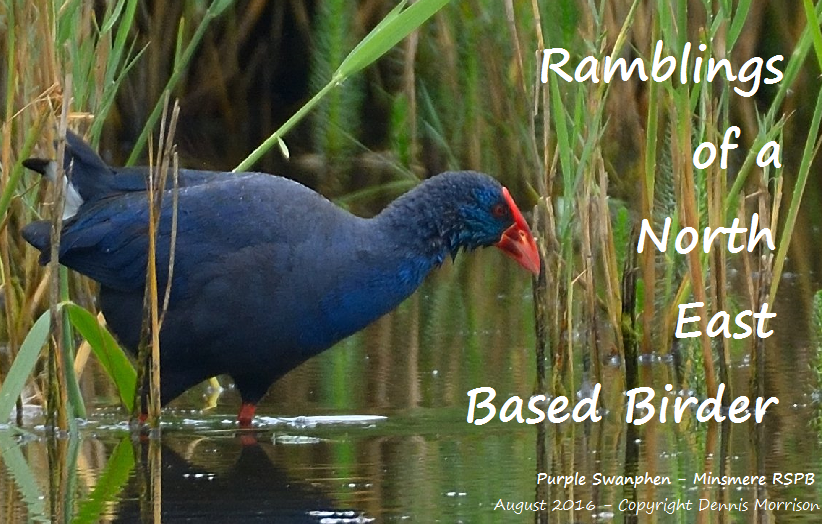(Eastern Olivaceous Warbler - copyright Mike Thrower)
Monday started well when a Pallas’s Warbler was trapped and ringed at Whitburn Coastal
Park Durham ,
I also heard Brambling going over
but I did not see it. Later on in the day a Red-breasted Flycatcher was trapped and ringed, this was a bird I
had not previously seen in the hand and was an absolute pleasure to see. I did
see the Pallas’s Warbler in the
field sometime after its release briefly as it flitted around with some Goldcrests, was a bonus to see it in
the field as I managed to get cracking views of that lemon yellow rump flashing
about as it moved around the sycamores.
(Pallas's Warbler - copyright Andrew Kinghorn)
(Pallas's Warbler - copyright Andrew Kinghorn)
(Red-breasted Flycatcher - copyright Andrew Kinghorn)
(Red-breasted Flycatcher - copyright Andrew Kinghorn)
Tuesday saw a Dusky
Warbler trapped and ringed, later on in the day a Rustic Bunting was seen briefly but then not found later on in the
day. At the coastal park a Ring Ouzel was also trapped, was great to see this
species up close and personal after having seen it many times in the past over
in the Durham
dales. I haven’t actually seen many coastal Ring Ouzels so this was a welcome treat to see up so close.
(Dusky Warbler - copyright Andrew Kinghorn)
(Dusky Warbler - copyright Andrew Kinghorn)
(Ring Ouzel - copyright Andrew Kinghorn)
(Ring Ouzel - copyright Andrew Kinghorn)
Wednesday was generally not very productive with only brief views
of the Dusky Warbler but little else
except a Jack Snipe and a Common Snipe. However some new Chiffchaffs were fresh in and hanging
around with the tit flock. Today (Thursday) I had good views in the field of
the Dusky Warbler and also heard the
bird ‘tacking’ as it went about its business. I also had a very good view of my
first and only Black Redstart of the
year in the Souter Lighthouse garden. A Barred
Warbler was nearby but I did not see it, apparently around feeding on elderberries across the road from the lighthouse.
Until next time, Foghorn out!










